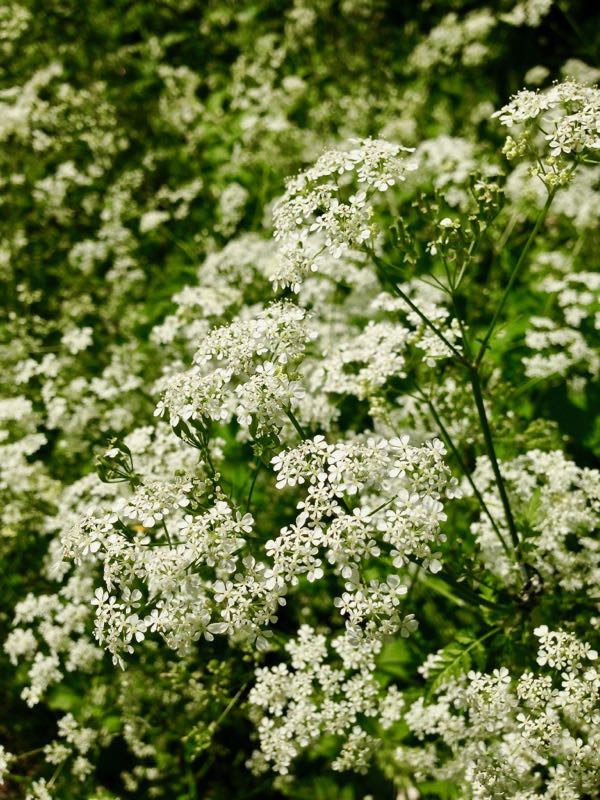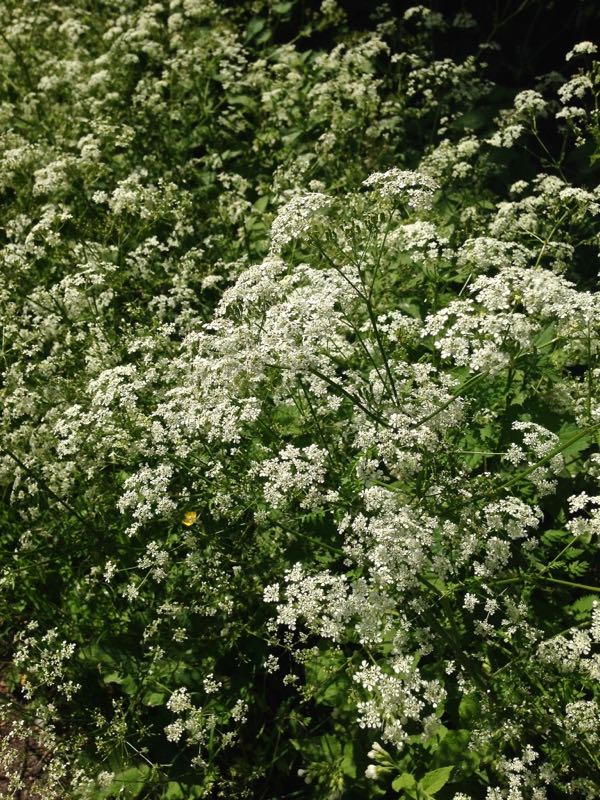Conium maculatum: Unveiling the Dark Majesty of Poison Hemlock
Conium maculatum, commonly known as Hemlock or Poison Hemlock, bears a haunting history and originates from the Mediterranean region, primarily Europe and North Africa. It belongs to the Apiaceae family, renowned for its diverse plant species. This notorious biennial weed has found its niche in disturbed areas, roadsides, fences, streambanks, and ditches, thriving in locations of human disruption.
Characteristics and Aroma: The Sinister Beauty With its fleshy white taproot adorned with red spots, Conium maculatum presents an eerie resemblance to a parsnip. Its hollow stems, streaked with small purple spots, tower to a mature height of 6 to 9 feet, displaying its sinister grandeur. The plant boasts lacy foliage, divided into triangular segments, adding an air of delicate allure. Be cautious when handling, as the roots, leaves, and stems emit a foul odor when crushed.
Flowers and Seeds: A Deadly Elegance Conium maculatum bears small, white flowers arranged in clusters that resemble umbrellas, reminiscent of other members of the carrot family. These alluring blooms, composed of five petals, contribute to the plant’s deceptive charm. After flowering, green fruits emerge, each harboring multiple seeds. The entire reproductive cycle of Conium maculatum is a testament to its tenacity, as the seeds persist in the soil for years, complicating eradication efforts.
Cultivation of Conium maculatum: Taming the Poisonous Intruder
Sunlight: Illuminating its Darkness Conium maculatum flourishes in a habitat of full sun to partial shade. Position it accordingly to ensure optimal growth and development of its ominous presence.
Watering: Nurturing with Caution Maintaining moist soil conditions is crucial for the growth of Conium maculatum. However, exercise caution when watering, as this plant’s toxic nature demands careful handling.
Soil: Dancing with the Devil’s Soil Poison Hemlock demonstrates a preference for poorly drained soil near water sources while displaying aversion to acidic soil and heavy shade. Take note of these soil preferences when considering its cultivation.
Pests and Diseases: A Deadly Defense The toxicity of Conium maculatum serves as a natural defense mechanism, deterring pests and diseases. However, it is essential to approach this plant with the utmost caution, as it poses a severe threat to both humans and livestock. Exercise extreme care when handling and always wear gloves when coming into contact with this poisonous intruder.
Propagation: A Cautionary Tale Conium maculatum can be propagated through its seeds, which are abundant within its green fruits. However, due to its highly toxic nature, exercise extreme caution during the propagation process to prevent accidental exposure and harm.
Ancient Legends and Modern Precautions: A Deadly Legacy
Conium maculatum has a dark history entwined with ancient Greek mythology, where it was used to poison condemned prisoners. According to Plato, even the philosopher Socrates met his demise at the hands of Conium maculatum. In modern times, it remains a menacing presence to be treated with utmost respect and caution.
Safe Removal: Banishing the Sinister If you find poison hemlock infiltrating your garden, it is of utmost importance to remove it safely and effectively. Never touch the plant with bare hands and always wear gloves and long sleeves when handling. The most effective method of eradication is to dig up the plant, ensuring the removal of its roots. Proper disposal is crucial, either by burning or burying the plant deeply in the ground.
Additional Precautions: Unmasking the Danger
To safely navigate the risks associated with poison hemlock, consider the following precautions:
- Wear gloves and long sleeves when working with the plant.
- Avoid direct contact with the plant using bare hands.
- Remove the plant entirely, including its roots.
- Dispose of the plant properly through burning or deep burial.
- If uncertain or concerned, consult a professional landscaper or arborist for assistance.
A Deadly Presence: Beware of the Conium maculatum
Conium maculatum is a highly toxic plant, capable of causing severe illness or even death. All parts of the plant, from the leaves and stems to the flowers and seeds, contain potent toxins. Symptoms of poisoning may include vomiting, diarrhea, seizures, and respiratory failure. Exercise extreme caution and respect when encountering this ominous botanical entity.
As captivating as it may be, the allure of Conium maculatum lies in its dark majesty. However, one must approach it with great care, fully understanding its potential dangers.







